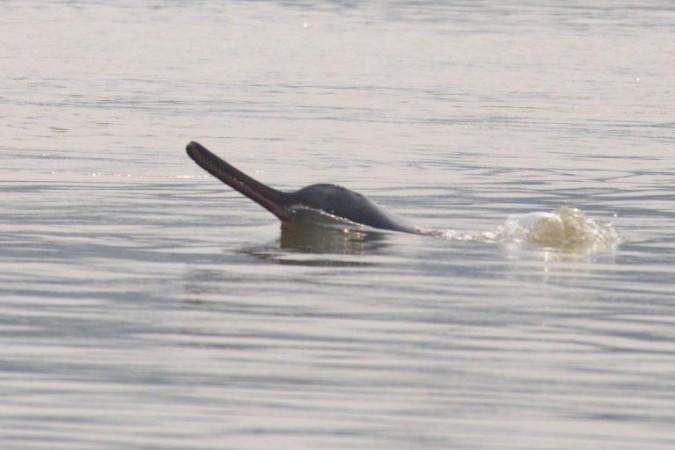The Uttar Pradesh Government has intensified its efforts to conserve the Gangetic dolphin by declaring it the aquatic animal of the state.
The Gangetic dolphins play an important role in maintaining the biodiversity of the Ganga River and also have the potential of becoming a major tourist attraction for the state.
Experts believe that declaring the Gangetic dolphin a state aquatic animal will increase the emphasis on the protection, conservation and promotion of this endangered mammal. This, in turn, will increase their numbers and enhance the beauty of the Ganga River.
The number of Gangetic dolphins is also the highest in UP. According to an estimate, if their total number is around 2,000, then the stretch of the river that passes through UP is home to about 1,600 of these freshwater dolphins.

Hence, the biggest responsibility for their protection, conservation and promotion lies with the UP Government.
Principal Chief Conservator of Forests, Anjani Acharya, says that the majority of freshwater dolphins are found in UP.
"The calculations have been done in collaboration with the Indian government. Their number has increased significantly. It is over 2,000. After declaring freshwater dolphins as state creatures, our focus on their conservation increases," Acharya said.
People living on the banks of the river will be made aware about the need for tconservationhe conservation and safety of Gangetic dolphins.
Since more than half of its population is found in UP, therefore, the responsibility of its protection also lies mainly with the government of the state.
Freshwater dolphins are found in rivers like Gerua, Chambal and Ghaghra but their numbers are the highest in Ganga River.
In the years to come, these dolphins will become the centre of attraction in the Ganga and a source of revenue for the UP Government.

Venkatesh Dutta, Professor of Environmental Science, Department of BBAU, said, "Dolphins are found in the Ganga basin. This is an endangered creature and is a mammal as it does not lay eggs like fish. Like any mammal, it gives birth to its offspring."
"Their fertility rate is low. A female gives birth to only one or two offspring in nearly three to four years. That is why their conservation is necessary. They face problems due to increasing pollution in our rivers. Fishing nets, ships and cruise boats are also a danger to them," he said.
The activity of dolphins is considered an indicator of the cleanliness of the river water as this aquatic mammal does not make its habitat in polluted water.
He said that dolphins also work as bio-indicators as they live in fresh water that is clean. In such a situation, their presence indicates that the quality of water is fine.
Experts say that dolphins are relatively intelligent creatures and their friendship with humans is well-known. They come to the surface of the river every few minutes to breathe that is why they are found only in relatively shallow rivers.
Yamuna, which is a tributary of the Ganga River, is an exception because despite its depth it is a habitat for freshwater dolphins.
However, in the Yamuna their presence is restricted between the 400 km stretch between Pachanda and Allahabad out of 1300-km-long stretch of the river.
(With inputs from IANS)








